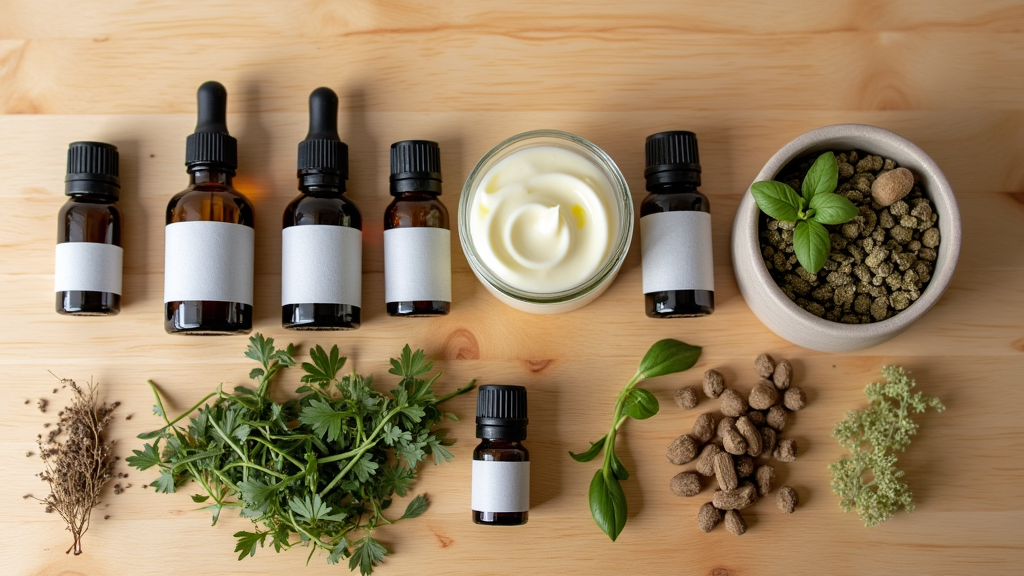Athlete’s foot has a habit of showing up uninvited and stubbornly lingering. Anyone who’s dealt with the itching, burning, and flaky skin between their toes knows just how uncomfortable this condition gets. While there are plenty of over the counter creams, I’ve found that essential oils can be pretty handy as a natural option. Here’s my personal rundown on how to use essential oils to help get athlete’s foot under control, and a closer look at what you should keep an eye on as you try this gentle, plant-powered approach.

Why Essential Oils Work for Athlete’s Foot
Athlete’s foot thrives in damp, warm places like gym shoes and locker rooms and is caused by fungi, mainly one called Trichophyton. Some essential oils have natural compounds that go up against fungi. While they aren’t miracle cures, with the right choice and a bit of patience, they really can help ease symptoms and fight off fungal intruders.
Tea tree oil, lavender, eucalyptus, peppermint, and oregano oils are worth checking out for their antifungal strength. There are several small studies along with a long tradition of using these oils for mild fungal skin issues. However, if you’re dealing with cracked, open sores or a severe infection, it’s always smart to ask a medical professional first.
Getting Started: Choosing the Right Essential Oils
Not all essential oils are equally effective, so picking the right ones is key. Here are the top picks I trust for athlete’s foot:
- Tea Tree Oil: Probably the most popular natural pick, tea tree oil is known to go after fungus and soothe irritated skin. Look for a version labeled as 100% pure and, if possible, organic.
- Lavender Oil: Along with a comforting aroma, lavender brings gentle antifungal properties that can calm itching and puffy skin. It isn’t as strong as tea tree, but it certainly gives relief.
- Eucalyptus Oil: With its fresh scent, eucalyptus fights fungus and cools down burning skin, making it a solid addition to oil blends for sore feet.
- Peppermint Oil: If you love a cooling tingle, peppermint delivers. Its antifungal and antimicrobial power offers quick relief from itching and discomfort.
- Oregano Oil: This one packs serious punch and comes with a strong scent —but it’s worth considering for stubborn spots. Always dilute it thoroughly with a carrier oil, as it can be harsh if used directly.
You’ll also need a carrier oil, such as coconut oil, olive oil, or sweet almond oil, to dilute your essential oils before putting anything on your skin. Putting essential oil on straight can cause serious irritation or burns.
How to Use Essential Oils Safely for Athlete’s Foot
Applying essential oils is straightforward, but following a few simple steps helps you get the best results while avoiding problems. Here’s how I go about it:
- Mix It Up: Always, always mix essential oils with a carrier oil. A good starting point is two to three drops of essential oil per teaspoon of carrier oil. For extra sensitive skin, drop it down even further to about one drop per teaspoon.
- Spot Test: Before putting anything on your feet, test a small patch (such as on the inside of your forearm) and wait an hour or two. If there’s no redness or stinging, you’re good to go.
- Clean and Dry: Athlete’s foot loves moisture, so keeping your feet clean and dry is crucial. Wash with soap, dry well (especially between your toes!), and then apply your oil blend.
- Apply: Dab just a bit of your oil blend onto the affected spots using a cotton swab or your finger. Don’t pile it on—a thin layer is more than enough. Repeat two or three times a day until things clear up.
- Stay Consistent: Essential oils work slowly. To really see results, stick to your routine for at least two weeks after symptoms appear to be gone. This way, you help keep the fungus from coming right back.
Be sure to wash your hands after every use and keep socks and shoes clean to stop the fungus from getting back in.
DIY Essential Oil Blends for Athlete’s Foot
I like to keep it simple when making blends at home. Remember: never use pure essential oils directly on your skin—always dilute with a carrier oil!
- Tea Tree Blend:
2 drops tea tree oil
1 drop lavender oil
1 teaspoon coconut oil - Cooling Mix:
1 drop peppermint oil
2 drops eucalyptus oil
1 teaspoon olive oil - Oregano Power:
1 drop oregano oil
2 drops tea tree oil
2 teaspoons carrier oil (sweet almond or jojoba works well)
Combine the ingredients in a clean small glass jar. Store your blend somewhere cool and dark and make a fresh batch every few days for best effect.
Here is a link to get some good quality oils:
https://referral.doterra.me/4740777
Common Hurdles and How To Handle Them
- Skin Reactions: Even when diluted, essential oils can cause redness or itching for some people. If this happens, tone it down by lowering the concentration or try a different oil altogether.
- Tough Cases: If you’ve been using an oil blend for over two weeks and it’s not helping, or if things look worse, contact a doctor or pharmacist. Sometimes, you need a stronger approach.
- Shoes and Hygiene: Treating your feet is only half the battle. Fungus tends to linger in shoes and socks, so wash socks in hot water and let shoes dry out. Sprinkling some baking soda inside shoes absorbs moisture, giving the fungus less chance to return.
Common Mistakes When Using Essential Oils
It’s easy to get excited and use too much. A couple of tips I’ve picked up along the way:
- Using Too Much: More isn’t better. Highly concentrated oils can burn or make things worse.
- Stopping Too Soon: If you stop treatment just because your skin looks better, you risk the fungus coming back. Stick with it for at least two weeks after it clears up on the surface.
Essential Oils: The Science & Safety
Using essential oils safely matters a lot. Pregnant women, young children, and anyone with sensitive skin or existing health conditions should talk to a healthcare expert before using them. Never ingest essential oils, and keep them away from your eyes and open wounds.
Where Essential Oils Fit in for Athlete’s Foot
Essential oils aren’t the quickest fix for athlete’s foot. They’re best used for mild cases or as a follow-up after more classic treatments. If you catch it early—just a bit of redness and itching—an essential oil blend can work pretty well.
They also make a good prevention step. Applying a diluted tea tree or lavender oil blend regularly to clean, dry feet can help keep athlete’s foot from coming back, especially if you frequent gyms or swimming pools.
FAQs About Curing Athlete’s Foot With Essential Oils
Question: How long does it take to see results with essential oils?
Answer: This depends on how serious the infection is and how consistent your treatment is. Mild cases can start improving within a week, but don’t stop early—keep up your routine for at least several weeks to target lingering fungus.
Question: Can I use essential oils with other treatments?
Answer: Yes! Just don’t layer strong creams and essential oils at the same time. Give your skin a break between each product and keep an eye out for any irritation.
Question: Which essential oil is safest to start with?
Answer: For most folks, diluted tea tree oil is the safest and usually the most effective. Still, always do a patch test first.
Question: Should I see a doctor for athlete’s foot?
Answer: If you have diabetes, poor circulation, or if the infection is severe, covers more area, or isn’t improving, make sure you reach out to a healthcare professional.
Wrapping Up: Using Essential Oils for Athlete’s Foot
Treating athlete’s foot with essential oils is a gentle, do-it-yourself approach that can bring relief and sometimes even wipe out the problem entirely. Picking the right oils, diluting them properly, sticking with your routine, and paying attention to your footwear are all important steps. If things aren’t getting better, don’t hesitate to include or switch to a stronger pharmacy product. Using essential oils safely and smartly is always the goal. With these tips and a consistent routine, you’ll give your feet their best shot at bouncing back.
